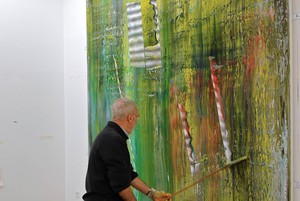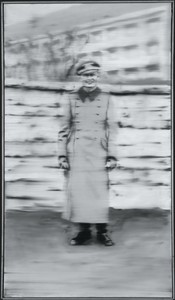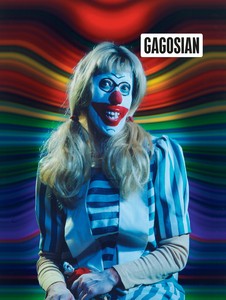
Donald Marron
Jacoba Urist profiles the legendary collector.
Gerhard Richter was born in 1932 in Dresden, Germany. Throughout his career, Richter has negotiated the frontier between photography and painting, captivated by the way in which these two seemingly opposing practices speak to and challenge one another. From exuberant canvases rendered with a squeegee and acerbic color charts to paintings of photographic detail and close-ups of a single brushstroke, Richter moves effortlessly between the two mediums, reveling in the complexity of their relationship, while never asserting one above the other.
Richter’s life traces the defining moments of twentieth-century history and his work reverberates with the trauma of National Socialism and the Holocaust. In the wake of the Second World War, Richter trained in a Socialist Realist style sanctioned by East Germany’s Communist government. When he defected to West Germany in 1961, a month before the Berlin Wall was erected, Richter left his entire artistic oeuvre up to that point behind. From 1961 to 1964—alongside Blinky Palermo and Sigmar Polke—Richter studied at the Staatliche Kunstakademie Düsseldorf, where he began to explore the material, conceptual, and historical implications of painting without ideological restraint.
Richter’s earliest paintings in Düsseldorf, stimulated by a fascination with current affairs and popular culture, responded to images from magazines and newspaper cuttings. Through the 1960s, Richter continued to address found and media images of subjects such as military jets, portraits, and aerial photographs. Notably, he reimagined family pictures he had smuggled from East Germany that included his smiling uncle Rudi, dressed in a Nazi uniform, and aunt Marianne, who Richter later discovered had been murdered in a mental institution during the Third Reich. Richter’s idiosyncratic technique of blurring made such complex moments of personal and social history seem to crackle with static, distancing the viewer from their subjects and casting doubt on the ability of painting to document in the same way as photography. In 1967, Richter was awarded the Junger Western art prize and began to expand his series of, what have come to be known as, Farbtafeln (Color Charts) (1966–2008) and Graue Bilder (Gray Paintings) (1966–2014). Richter was drawn to the tonal nuances of gray as well as the hue’s conceptual rigor—seemingly stripped of feeling and association. In 1972, Richter was chosen to represent West Germany at the Venice Biennale. That same year, he exhibited at Documenta in Kassel, Germany, where he showed again in 1977, 1982, and 1987.

Jacoba Urist profiles the legendary collector.

Hans Ulrich Obrist traces the history behind Richter’s Cage paintings and speaks with the artist about their creation.

The Spring 2021 issue of Gagosian Quarterly is now available, featuring Gerhard Richter’s Helen (1963) on its cover.

Richard Calvocoressi reflects on the monochrome world of Gerhard Richter’s early photo paintings.

The Spring 2020 issue of Gagosian Quarterly is now available, featuring Cindy Sherman’s Untitled #412 (2003) on its cover.
Jenny Saville reveals the process behind her new self-portrait, painted in response to Rembrandt’s masterpiece Self-Portrait with Two Circles.